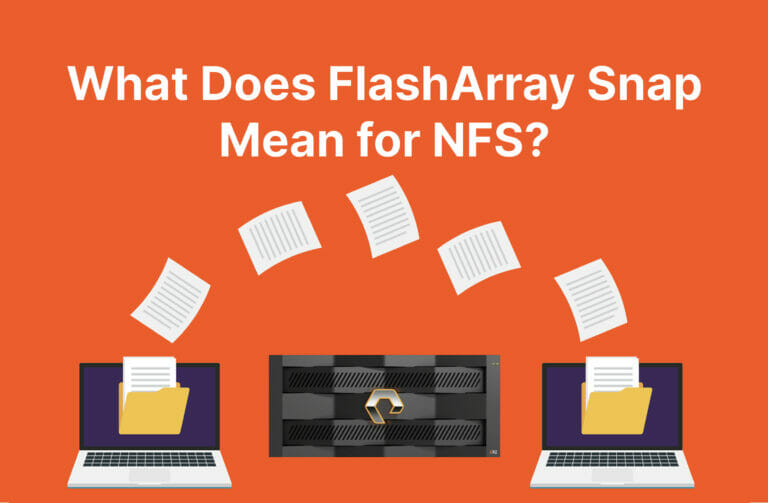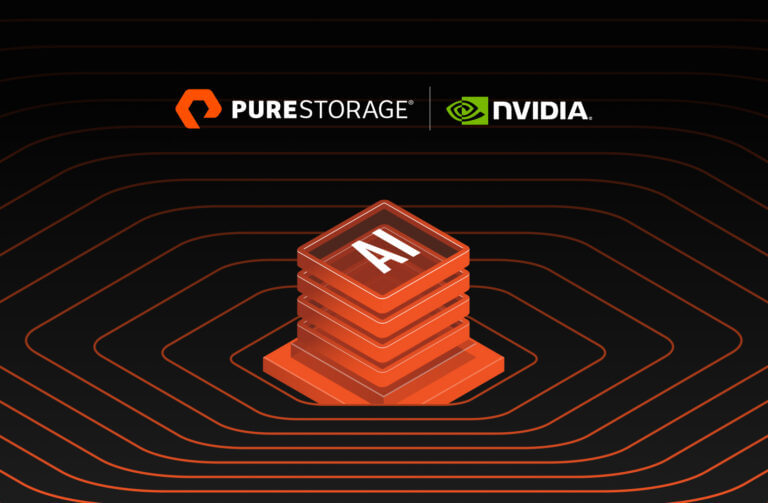Veeam Universal Storage API (USAPI) integration with Pure Storage has various options for performing snapshots and backup for primary applications. One of the use cases is Veeam Pure Storage snapshot offload to NFS.
What Is FlashArray™ Snap-to-NFS?
FlashArray Snap-to-NFS is a self-backup technology built into FlashArray. It’s included with no additional software license and has all data management-level features such as preserving compression while in transit and data reduction capabilities across snapshots. For more information on snapshot offload to NFS, please visit this support page (Pure1 login required).
How It Works
The Veeam snapshot offload feature is supported on Purity 6.3 and above. The Veeam snapshot offload job can be configured on the virtual machine with the corresponding volume on the FlashArray device. The Veeam snapshot job will create a corresponding volume snapshot with Veeam-defined retention and the same job is configured to offload to a secondary target with its own retention timeline.
The offload snapshot feature can serve as a long-term archiving option for years. In addition, you can use it to restore the entire snapshot to the original FlashArray device, and later, it can be restored to the original volume. The recovery of archive snapshots can be performed from the Veeam backup and recovery storage infrastructure via browsing to the volume of the primary storage and selecting the archived snapshot to restore.
Check out this video on how you can configure a snapshot offload job on Veeam with Pure Storage.
Efficiency Benefits of Snap-to-NFS
Since Snap-to-NFS was built from scratch for FlashArray, it’s deeply integrated with the Purity operating environment, resulting in highly efficient operation. A few examples of the efficiency of Snap-to-NFS are as follows:
- Because Snap-to-NFS is a self-backup technology built into FlashArray, no additional software licenses or media servers are required. There’s no need to install or run a Pure software agent on the NFS target either.
- Snap-to-NFS preserves data compression in transit and on the NFS target, saving network bandwidth and further increasing the efficiency of inexpensive NFS storage appliances, even ones without built-in compression.
- Snap-to-NFS preserves data reduction across snapshots of a volume. After offloading the initial baseline snapshot of a volume, it only sends delta changes for subsequent snaps of the same volume. The snapshot differencing engine runs within the Purity operating environment in the FlashArray device and uses a local copy of the previous snapshot to compute the delta changes. Therefore, there’s no back-and-forth network traffic between the FlashArray device and the offload target to compute deltas between snapshots, further reducing network congestion. As a result:
- Less space is consumed on the NFS target.
- Network utilization is minimized.
- Backup windows are much smaller.
- Snap-to-NFS knows which data blocks already exist on the FlashArray device, so during restores, it only pulls back the missing data blocks to rebuild the complete snapshot on the FlashArray device. In addition, Snap-to-NFS uses dedupe-preserving restores, so when data is restored from the offload target to the FlashArray device, it’s deduped to save precious space on the FlashArray device.
![]()






